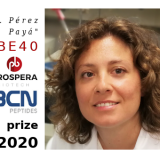At the heart of the sliding filaments

The sarcomere is a fascinating example of a micrometer-size machine whose activity is exquisitely organized to sustain functional contraction of muscles. The essential components of sarcomeres are myosin molecular motors, assembled in thick filaments, and actin thin filaments. During contraction, thick filaments slide on thin filaments. This sliding filament hypothesis was proposed more than 60 years ago and essentially has remained unchallenged over the decades. However, there are key aspects of sliding filament mechanism that remain not clearly understood. For instance, the model assumes that contraction is homogeneous along the whole region where filaments overlap. In a recent paper, Previs, et al. propose a new mechanism that ensures contraction homogeneity involving a key regulatory protein, myosin-binding protein C (MyBP-C) [1].
In order to couple contraction to electric signals, the filament sliding is only allowed when Ca2+ ions are released from specialized reservoirs (the sarcoplasmic reticulum) into the sarcomeres. Ca2+ binding to regulatory proteins of the thin filament allows the myosin motors to interact with actin, enabling myosin-generated powered strokes, that finally result in filament sliding. However, using super-resolution microscopy Previs, et al. show that the location of the Ca2+ reservoirs is such that the release of Ca2+ is not homogeneous along the sarcomere (see featured Figure). In other words, the concentration of Ca2+ is higher close to the Ca2+ releasing channels, which would induce higher contractility at that region of the sarcomere. The new model proposes that this potential inhomogeneity is corrected by the presence of MyBP-C in the C-zone, exactly distal to the Ca2+ releasing channels. At this location, MyBP-C would enable activation of thin filaments at lower Ca2+ concentrations.
Mutations in the cardiac isoform of MyBP-C are the most prevalent cause of Hypertrophic Cardiomyopathy (HCM), a potentially devastating disease of the heart that is responsible for most cases of sudden cardiac death [2]. However, very little is known regarding how mutant MyBP-C proteins lead to disease. The results presented by Previs, et al. lead to the proposal that failure to ensure homogeneous contractility may be a pathological mechanism inducing HCM.
References
- Previs MJ, Prosser BL, Mun JY, Previs SB, Gulick J, … and Warshaw DM. “Myosin-binding protein C corrects an intrinsic inhomogeneity in cardiac excitation-contraction coupling”. Science Advances, 2015, 1: e1400205. doi:10.1126/sciadv.1400205.
- Harris SP, Lyons RG and Bezold KL. “In the thick of it: HCM-causing mutations in myosin binding proteins of the thick filament”. Circ Res, 2011, 108: 751. doi:10.1161/CIRCRESAHA.110.231670.






